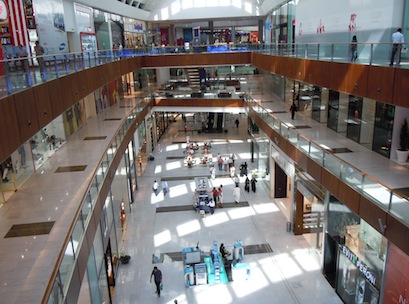Not all malls will survive, not all malls will die. The question is what to do to ensure your mall is winner? In the coming evolution of malls, there are a few self-evident truths to be considered. Truth one: The Offer The offer (retail mix) will change, possibly unrecognisably so. At one point, malls have become the go-to place for any shopping, primarily offering convenience. The mainstay of the mall became the easy shopping for functional comparison goods like fashion. In the last decade or s
o the trend has been towards more experiential forms of retailing, but to be honest, ‘experiential’ meant adding food – ala ‘eat street’. This was a relatively one-dimensional view of ‘experience’.
Recently the emphasis has widened to include services (healthcare, libraries, gyms).
The two obstacles that prevent malls from evolving sooner and better are:
Lack of retailer-led innovation.
Mall owners can only facilitate the infrastructure needed to retail; they are not retailers or even in the retail business. Too many retailers are acting like deer caught in the headlights of e-commerce (or the B-Double called Amazon.) And, very importantly, ‘retail experience’ has become a buzzword and few people seem to be able to articulate.
The other obstacle is the lack of flexibility.
Some of that is caused by local government planning regulations. And some of that is self-inflicted, as investors demand rigid lease structures (to minimise risk and differentiate from other investment classes) but these structures do not facilitate agile retail and innovation.
Truth two: Time horizon and lag
The malls that will survive have owners who play the long game. The current system has considerable inefficiencies caused by the (a) different investment and performance profiles of landlords vs tenants, and (b) the resultant friction costs caused by the lag in relative fortunes.
The solution is to adopt an ‘agile’ lease structure. I will address this in another post.
Truth three: balance of power
The balance of power between landlord and tenant will oscillate during the transition, even if it now favours the retailer in most instances.
Truth four: e-ommerce
The nature of e-commerce will influence the format of the new mall.
It is shaping what customers expect to be available, both in product, expediency, price and service. Responding to this challenge requires two tactical responses:
Attack by differentiating:
A physical space with real people interactions cannot compete with a virtual/digital space on many of these elements, so it is critical to find/create and then focus (relentlessly) on the differentiators.
Defend by seamless integration:
This is what the commentaries mean by ‘multi-channel’ retail. Ensure the customer can seamlessly move between channels, irrespective of the specific stage of the purchase journey.
This will eventually determine the retail mix of the mall in very specific ways. (Keep reading Inside Retail and I’ll share those thoughts in future article.)
Truth 5: technology
Technology will play a key part in the functionality and features of the new mall.
In psychology, there are two types of stress: one is called eustress and then the old fashioned distress. Point-of-sale causes distress. That is why tap-and-go payment resulted in higher frequency of purchase. Trütsch found (2014) that “contactless credit and debit card adopters undertake statistically significantly more transactions by their corresponding payment cards compared to non-adopters while this also holds true for overall card services payments.”
Walk in, walk out shopping (WIWO) with no interaction at all will be adopted to some extent by certain consumers for certain types of experience. WIWO shopping behaviour is adopted where less friction is desired, but less friction is not required in all elements of shopping.
If there is no friction there is no interaction, if there is no interaction, there can’t be a (pleasurable) experience. (Ahem.)
Truth six: fundamentals
The malls that survive will do so because they address the core values that underpin all consumption. An important consumption value is “the experience”. But there are five additional patronage values.
The more complete (and strategic) the landlord is about responding to these values, the more prosperous the future. Strategies like ‘community engagement’ and ‘placemaking’ are tentative steps in the right direction of tapping into some of these other consumption values.
Truth seven: No one knows
No one knows for sure the exact nature and details of what that looks like specifically. But on aggregate, the mall owners can and will figure out what works.
If you are an owner or investor, I hope it is you.
As always, many of these truths must be addressed by spending money. The challenge is to do so when the return on investment is over the horizon, or maybe even unquantifiable. Ultimately, this will be the real differentiator for shopping centre landlords: a commitment to investing in a future with uncertain returns.
I didn’t say it would be easy, or that it wouldn’t require courage; just that it is possible.
Dennis Price: Co-Founder at www.yearone.solutions

